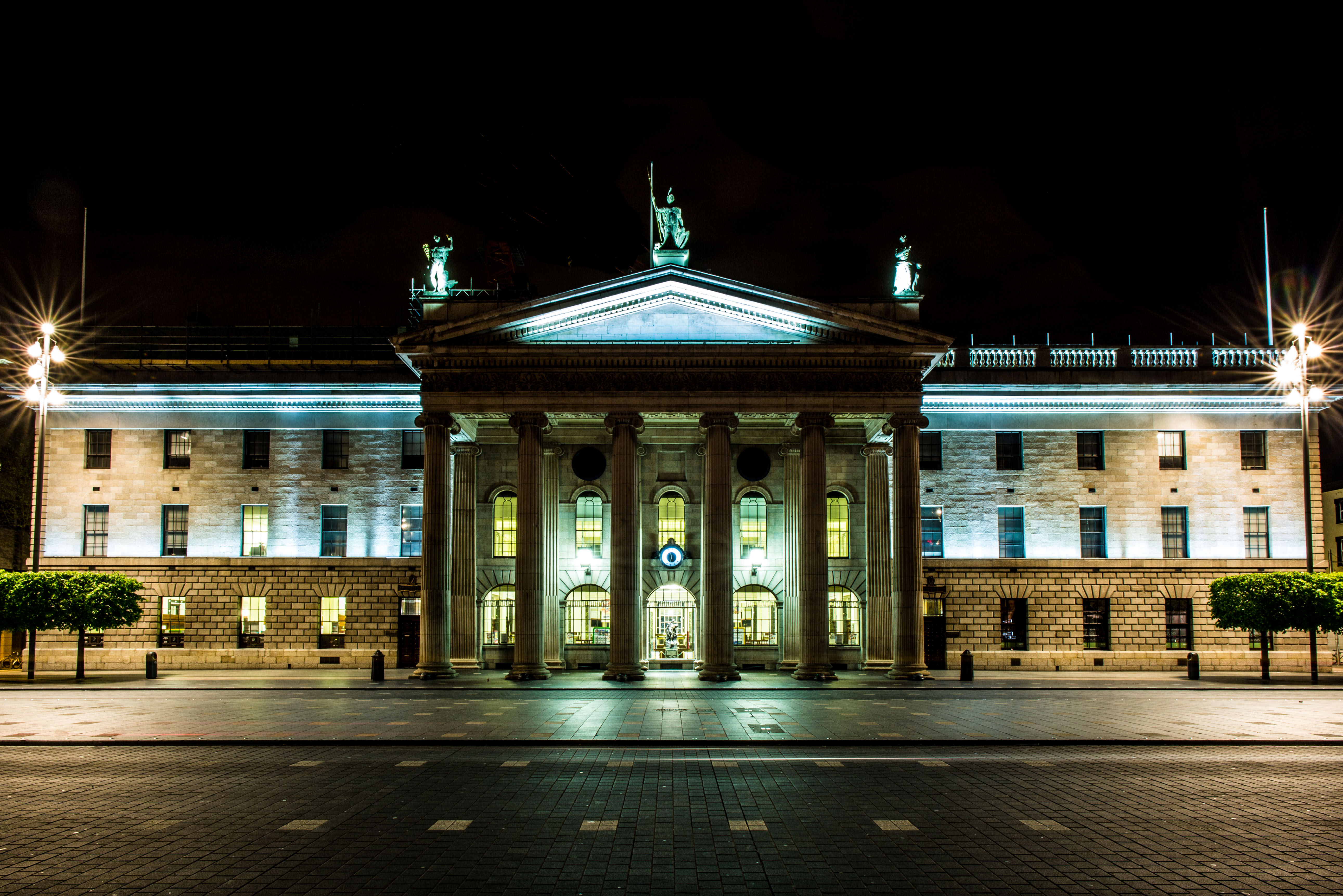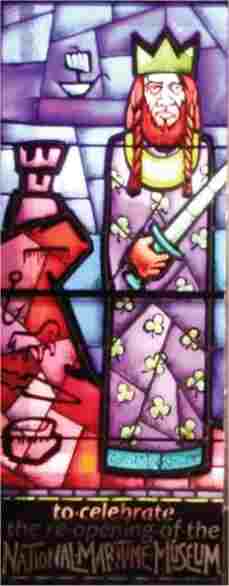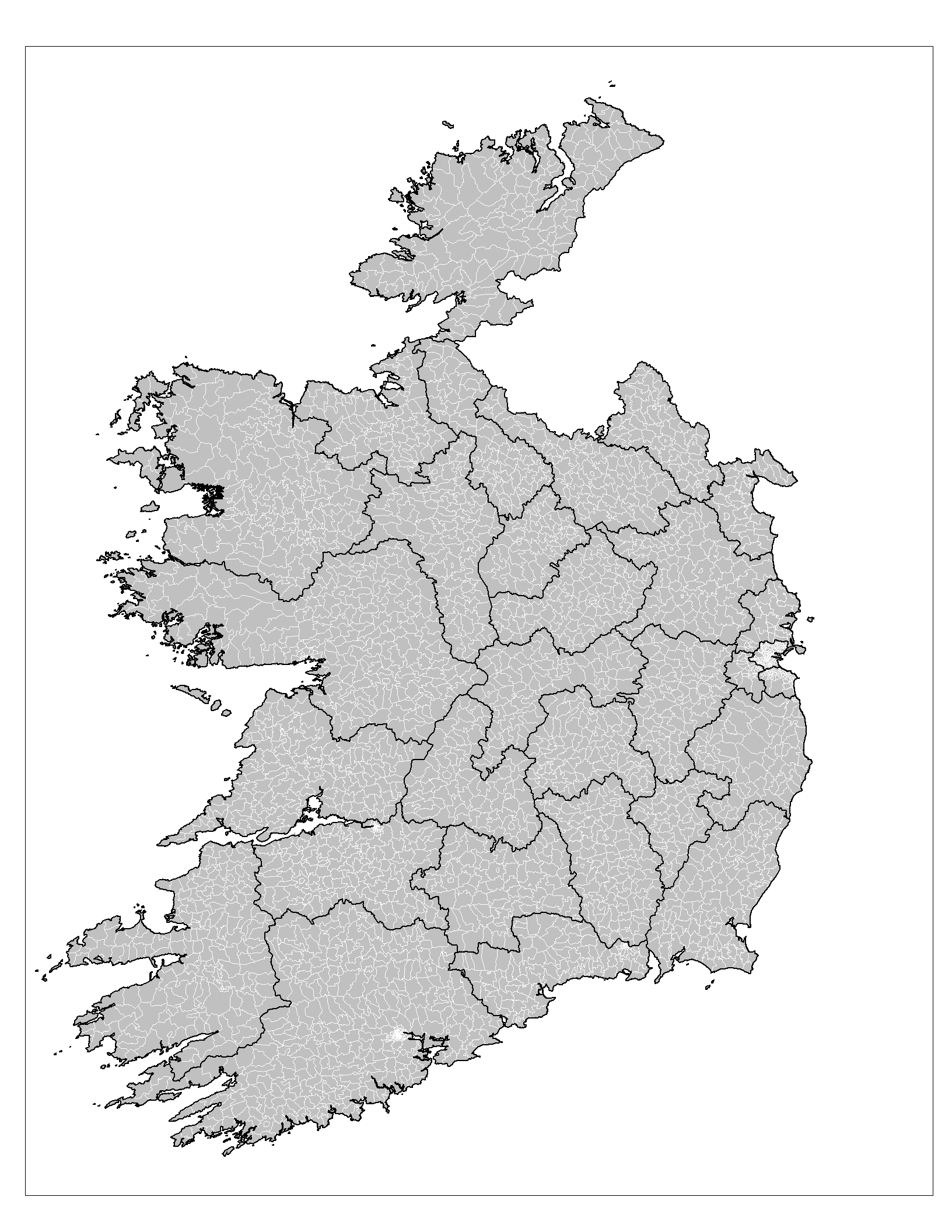|
Dublin Metropolitan Area
The Greater Dublin Area (GDA; Irish: ''Mórcheantar Bhaile Átha Cliath''), or simply Greater Dublin, is an informal term that is taken to include the city of Dublin and its hinterland, with varying definitions as to its extent. As of 2022, its estimated population is 2,073,459. The Dublin Transport Authority Act 2008 defines the Greater Dublin Area as including the counties of Dublin ( Dublin City, South Dublin, Dún Laoghaire–Rathdown and Fingal), Meath, Kildare, and Wicklow. The area is defined for transport and strategic planning and is not a formal political unit. The term can also apply more narrowly to the Dublin urban area and nearby suburban towns. Former boundaries The urban part of Dublin and surrounding areas has been defined by various statutory instruments, mainly those referring to the Garda Síochána and Courts of the Republic of Ireland. The city and five counties were grouped together in the order creating the Dublin Transportation Office, giving functions ... [...More Info...] [...Related Items...] OR: [Wikipedia] [Google] [Baidu] |
Eircode
A "postal address" in Ireland is a place of delivery defined by Irish Standard (IS) EN 14142-1:2011 ("Postal services. Address databases") and serviced by the universal service provider, '' An Post''. Its addressing guides comply with the guidelines of the Universal Postal Union (UPU), the United Nations-affiliated body responsible for promoting standards in the postal industry, across the world. In Ireland, 35% of Irish premises (over 600,000) have non-unique addresses due to an absence of house numbers or names. Before the introduction of a national postcode system (Eircode) in 2015, this required postal workers to remember which family names corresponded to which house in smaller towns, and many townlands,. As of 2021, An Post encourages customers to use Eircode because it ensures that their post person can pinpoint the exact location. Ireland was the last country in the OECD to create a postcode system. In July 2015 all 2.2 million residential and business addres ... [...More Info...] [...Related Items...] OR: [Wikipedia] [Google] [Baidu] |
Bray, County Wicklow
Bray ( ) is a coastal town in north County Wicklow, Ireland. It is situated about south of Dublin city centre on the east coast. It has a population of 32,600 making it the ninth largest urban area within Ireland (at the 2016 census). Bray is home to Ardmore Studios, and some light industry is located in the town, with some business and retail parks on its southern periphery. Commuter links between Bray and Dublin are provided by rail, Dublin Bus and the M11 and M50 motorways. Small parts of the town's northern outskirts are in County Dublin. Originally developed as a planned resort town in the 19th century, Bray's popularity as a seaside resort was serviced by the Dublin and Kingstown Railway, which was extended to Bray in 1854. During the late 20th century, the town's use as a resort declined when foreign travel became an option for holiday-makers. However, day-trippers continued to come to Bray during the summer months. Etymology The name ''Bray'' is an anglicisation ... [...More Info...] [...Related Items...] OR: [Wikipedia] [Google] [Baidu] |
Maynooth
Maynooth (; ga, Maigh Nuad) is a university town in north County Kildare, Ireland. It is home to Maynooth University (part of the National University of Ireland and also known as the National University of Ireland, Maynooth) and St Patrick's College, a Pontifical University and Ireland's sole Roman Catholic seminary. Maynooth is also the seat of the Irish Catholic Bishops' Conference and holds the headquarters of Ireland's largest development charity, Trócaire. Maynooth is located 24 kilometres (15 miles) west of central Dublin. Location and access Maynooth is located on the R148 road between Leixlip and Kilcock, with the M4 motorway bypassing the town. Other roads connect the town to Celbridge, Clane, and Dunboyne. Maynooth is also on the Dublin-Sligo railway line and is served by the Commuter and InterCity train services. Etymology Maynooth comes or ''Maigh Nuadhad'', meaning "plain of Nuadha". ''Maigh Nuad'' is the modern spelling. Nuadha was one of the g ... [...More Info...] [...Related Items...] OR: [Wikipedia] [Google] [Baidu] |
Ashbourne, County Meath
Ashbourne, historically called ''Killeglan'' or ''Kildeglan'' (), is a town in County Meath, Ireland. Located about 20 km north of Dublin and close to the M2 motorway, Ashbourne is a commuter town within Greater Dublin. In the 20 years between the 1996 and 2016 census, the town almost tripled in population from approximately 4,900 to 12,700 inhabitants. The town is passed by the Broad Meadow Water, which comes from Ratoath and Dunshaughlin. History Ancient settlement Archaeological excavations in the area around Ashbourne have revealed evidence of settlement back to neolithic times. In the townland of Rath, to the north of the town centre, a Bronze Age settlement was found during the construction of the M2 motorway. Excavations in the vicinity of the cemetery of Killegland revealed the extent of the early Christian settlement, with souterrains, house sites and a large enclosure centred around the remains of the church that is visible in the cemetery. This would lin ... [...More Info...] [...Related Items...] OR: [Wikipedia] [Google] [Baidu] |
Tallaght
) , image_skyline = TallaghtDublinD24.jpg , image_caption = Tallaght, Dublin , image_flag = , flag_size = , pushpin_map = Dublin#Ireland , pushpin_label_position = left , pushpin_map_caption = Location within Greater Dublin, Ireland , coordinates = , blank_name_sec1 = Irish Grid Reference , blank_info_sec1 = , unit_pref = Metric , elevation_m = 90 , area_footnotes = , area_total_km2 = , area_land_km2 = , area_water_km2 = , area_total_sq_mi = , area_land_sq_mi = , area_water_sq_mi = , area_water_percent = , subdivision_type = Country , subdivision_name = Ireland , subdivision_type1 = Province , subdivision_name1 = Leinster , subdivision_type2 = County , subdivision_name2 = South Dublin , subdivision_typ ... [...More Info...] [...Related Items...] OR: [Wikipedia] [Google] [Baidu] |
Dún Laoghaire
Dún Laoghaire ( , ) is a suburban coastal town in Dublin in Ireland. It is the administrative centre of Dún Laoghaire–Rathdown. The town was built following the 1816 legislation that allowed the building of a major port to serve Dublin. It was known as Dunleary until it was renamed Kingstown in honour of King George IV's 1821 visit, and in 1920 was given its present name, the original Irish form of Dunleary. Over time, the town became a residential location, a seaside resort and the terminus of Ireland's first railway. Toponymy The town's name means "fort of Laoghaire". This refers to Lóegaire mac Néill (modern spelling: Laoghaire Mac Néill), a 5th century High King of Ireland, who chose the site as a sea base from which to carry out raids on Britain and Gaul. Traces of fortifications from that time have been found on the coast, and some of the stone is kept in the Maritime Museum. The name is officially spelt Dún Laoghaire in modern Irish orthography; some ... [...More Info...] [...Related Items...] OR: [Wikipedia] [Google] [Baidu] |
O'Connell Street
O'Connell Street () is a street in the centre of Dublin, Ireland, running north from the River Liffey. It connects the O'Connell Bridge to the south with Parnell Street to the north and is roughly split into two sections bisected by Henry Street. The Luas tram system runs along the street. During the 17th century, it was a narrow street known as Drogheda Street, named after Henry Moore, Earl of Drogheda. It was widened in the late 18th century by the Wide Streets Commission and renamed Sackville Street (''Sráid Saicfil'') after Lionel Sackville, 1st Duke of Dorset. In 1924, it was renamed in honour of nationalist leader Daniel O'Connell, whose statue by John Henry Foley stands at the lower end of the street facing O'Connell Bridge. The street has played an important part in Irish history and features several important monuments, including statues of O'Connell and trade union leader James Larkin, as well as the Spire of Dublin. It formed the backdrop to one of the 19 ... [...More Info...] [...Related Items...] OR: [Wikipedia] [Google] [Baidu] |
Electoral Division (Ireland)
An electoral division (ED, ) is a legally defined administrative area in the Republic of Ireland, generally comprising multiple townlands, and formerly a subdivision of urban and rural districts. Until 1996, EDs were known as district electoral divisions (DEDs, ) in the 29 county council areas and wards in the five county boroughs. Until 1972, DEDs also existed in Northern Ireland. The predecessor poor law electoral divisions were introduced throughout the island of Ireland in the 1830s. The divisions were used as local-government electoral areas until 1919 in what is now the Republic and until 1972 in Northern Ireland. History until partition Electoral divisions originated under the Poor Relief (Ireland) Act 1838 as "poor law electoral divisions": electoral divisions of a poor law union (PLU) returning one or more members to the PLU's board of guardians. The boundaries of these were drawn by Poor Law Commissioners, with the intention of producing areas roughly equivalent in ... [...More Info...] [...Related Items...] OR: [Wikipedia] [Google] [Baidu] |
Eastern And Midland Regional Assembly
The Eastern and Midland Region has been defined as a region in Ireland since 1 January 2015. It is a NUTS Level II statistical region of Ireland (coded IE06). NUTS 2 Regions may be classified as ''less developed regions'', ''transition regions'', or ''more developed regions'' to determine eligibility for funding under the European Regional Development Fund The European Regional Development Fund (ERDF) is one of the European Structural and Investment Funds allocated by the European Union. Its purpose is to transfer money from richer regions (not countries), and invest it in the infrastructure and se ... and the European Social Fund Plus. In 2021, the Eastern and Midland Region was classified as a ''more developed region''. The Eastern and Midland Regional Assembly is composed of members nominated from the local authorities in the region. It is one of three Regional Assemblies in Ireland which were established in 2015 following an amendment to the Local Government Act ... [...More Info...] [...Related Items...] OR: [Wikipedia] [Google] [Baidu] |
Kilcock
Kilcock () is a town and townland in the north of County Kildare, Ireland, on the border with County Meath. Its population of 6,093 makes it the ninth largest town in Kildare and 76th largest in Ireland. The town is located 35 km (22 mi) west of Dublin, and is on the Royal Canal. Local industries include a large Musgrave Group distribution centre, which supplies SuperValu and Centra stores across much of the country. History Kilcock takes its name from the 6th century Saint Coca who founded a church beside the Rye River, a major tributary of the River Liffey. The saint is traditionally said to have been a sister of St. Kevin of Glendalough; by occupation, she was an embroiderer of church vestments, including those for St. Colmcille. A holy well dedicated to Coca, formerly thought to be lost in the back-yards of Kilcock, is believed locally to be in the area behind the Ulster Bank, and her feast is remembered on 6 June. However, this commemoration is a modern r ... [...More Info...] [...Related Items...] OR: [Wikipedia] [Google] [Baidu] |
Malahide
Malahide ( ; ) is an affluent coastal settlement in Fingal, County Dublin, Ireland, situated north of Dublin city. It has a village centre surrounded by suburban housing estates, with a population of over 17,000. Malahide Castle dates from the 12th century and is surrounded by a large park, part of which incorporates an international cricket ground. The area also features a sandy beach, a marina, and a variety of sporting clubs. Etymology The modern name Malahide comes from "Mullach Íde", possibly meaning "the hill of Íde" or "Íde's sand-hill"; it could also mean "Sand-hills of the Hydes" (from Mullac h-Íde), in turn probably referring to a Norman family from the Donabate area. According to the Placenames Database of Ireland the name Malahide is possibly derived from the Irish "Baile Átha Thíd" meaning "the town of the ford of Thíd", which may have been a ford at the mouth of the Gaybrook Stream, on the road to Swords. Malahide Bay was anciently called ''Inber Domnan ... [...More Info...] [...Related Items...] OR: [Wikipedia] [Google] [Baidu] |
Commuter Town
A commuter town is a populated area that is primarily residential rather than commercial or industrial. Routine travel from home to work and back is called commuting, which is where the term comes from. A commuter town may be called by many other terms: "bedroom community" (Canada and northeastern US), "bedroom town", "bedroom suburb" (US), "dormitory town", or "dormitory suburb" (Britain/Commonwealth/Ireland). In Japan, a commuter town may be referred to by the '' wasei-eigo'' coinage . The term " exurb" was used from the 1950s, but since 2006, is generally used for areas beyond suburbs and specifically less densely built than the suburbs to which the exurbs' residents commute. Causes Often commuter towns form when workers in a region cannot afford to live where they work and must seek residency in another town with a lower cost of living. The late 20th century, the dot-com bubble and United States housing bubble drove housing costs in Californian metropolitan areas to ... [...More Info...] [...Related Items...] OR: [Wikipedia] [Google] [Baidu] |









